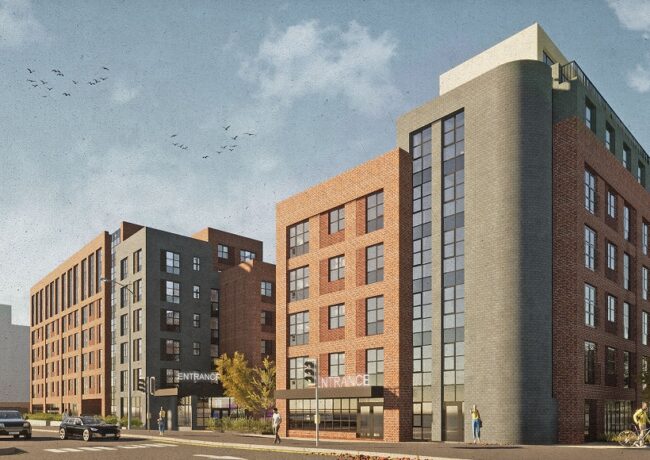Housing group acts swiftly as safety checks increase
Housing trust Wythenshawe Community Housing Group has started work to remove 78 feature panels at its Village 135 scheme that were identified as using similar material to the cladding panels used at Grenfell Tower.
Although Peter O’Reilly, county fire officer of Geater Manchester Fire & Rescue Service, declared the service satisfied that the building was safe, the organisation acted immediately to start removing the cladding.
WCHG worked with the fire service to review Wythenshawe’s 10 tower blocks following last week’s disaster. In a statement, it said: “We want to reassure all our residents we take their safety very seriously. We have robust fire safety measures in place, with a state of the art fire alarm system for early detection, 24 hour on-site concierge service and all alarms are linked to a Careline system for added security.”
The latest figures from tests being carried out across the UK’s 600 cladded blocks show 11 buildings in eight separate local authority areas to have the Aluminium Composite Material cladding in question. Along with Manchester, only Camden and Plymouth have been identified among this list.
Melanie Dawes CB, permanent secretary at the DCLG, yesterday wrote to local authority and housing association chief executives across the country, issuing advice endorsed by the National Fire Chiefs Council on steps to be taken when the panels in question are found to be in use.
Liverpool has reported that none of its social housing uses the cladding. The city council met yesterday with fire chiefs and housing associations, and reported that further safety tests are being carried out at 28 low to high rise blocks to look at related issues such as sprinkler systems, fire breaks, evacuation plans and fire alarms.
Deputy mayor Cllr Ann O’Byrne said: “We have a duty of care to residents to reassure them their buildings are safe, whether they live in a high or low rise block or one that has recently been refurbished. From what we know so far, a unique set of circumstances combined and led to the Grenfell tragedy, but there is absolutely no room for complacency.
“The council, Mersey Fire and Rescue Service and the city’s housing associations are co-ordinating a comprehensive programme of assessments and inspections and we will be meeting again in a fortnight to look at the next steps. We are also reaching out to the private sector and major buildings and venues to get a complete picture of safety across all high occupancy buildings in the city.”
Cheshire East Council has also reported that a review of its own building stock has shown no issues. The authority has contacted its registered housing providers to seek further assurances.





Glad to see one organisation is being proactive and taking this seriously, but what the public need to see – mandated by central government – are independent experts taking samples from every building with cladding on it and testing them, with full details of steps taken and results per building.
For example, has Liverpool council carried out physical tests on the cladding on its buildings? And if so has that testing been carried out independently?
With Camden council saying that what they ordered was not what was installed on some of their buildings, clearly nothing can be taken for granted and I feel it would be unacceptably and obviously lax to rely on anything other than physical testing.
By Mike
Incidentally, I don’t believe it was a “unique set of circumstances” that led to the dreadful recent tragedy. There was a flat fire. It spread to the outside of the building, as fires can do. The cladding then went up in flames, thus setting the whole building rapidly alight, and burning the rest of it from the outside in.
If it was a “unique set of circumstances”, rather than something that could easily happen elsewhere due to flammable cladding, then various councils wouldn’t right now be rapidly stripping cladding off buildings nor government issuing urgent advice.
Councils don’t merely have a “duty of care to residents to reassure them their buildings are safe”, they have a duty of care to make sure that buildings being developed actually are safe.
By Mike